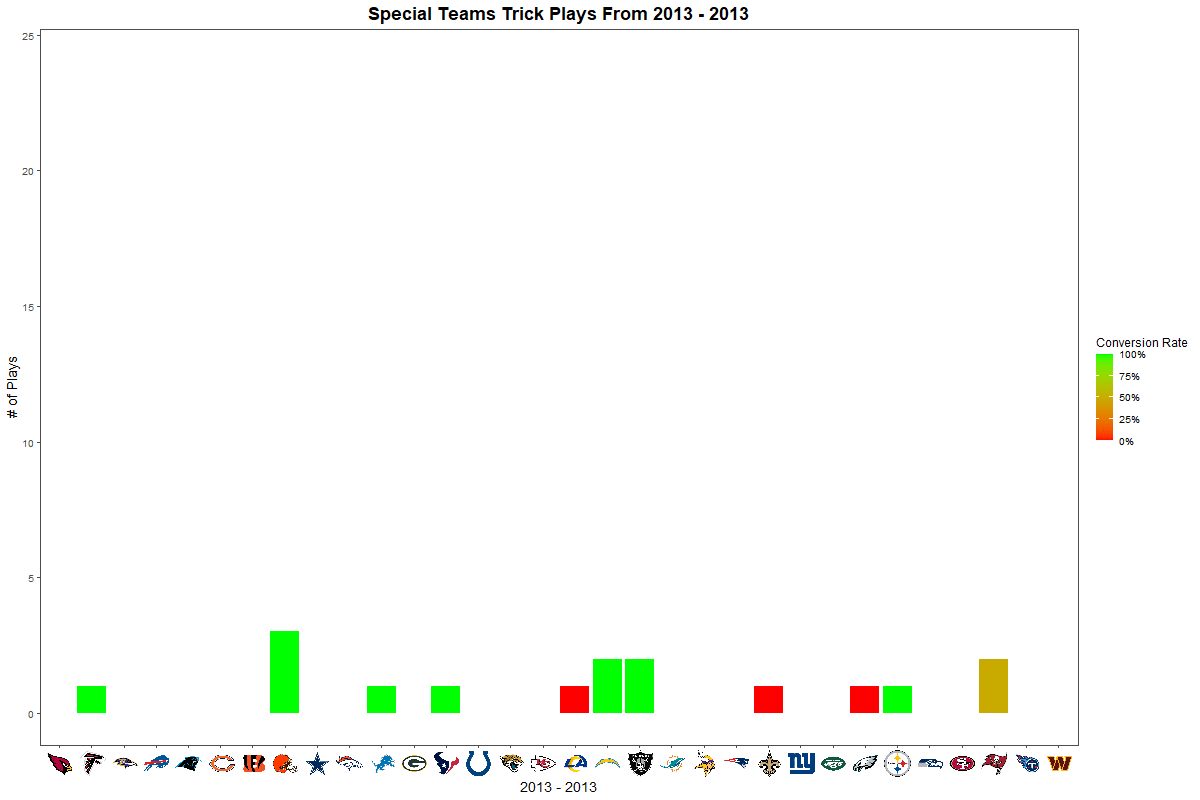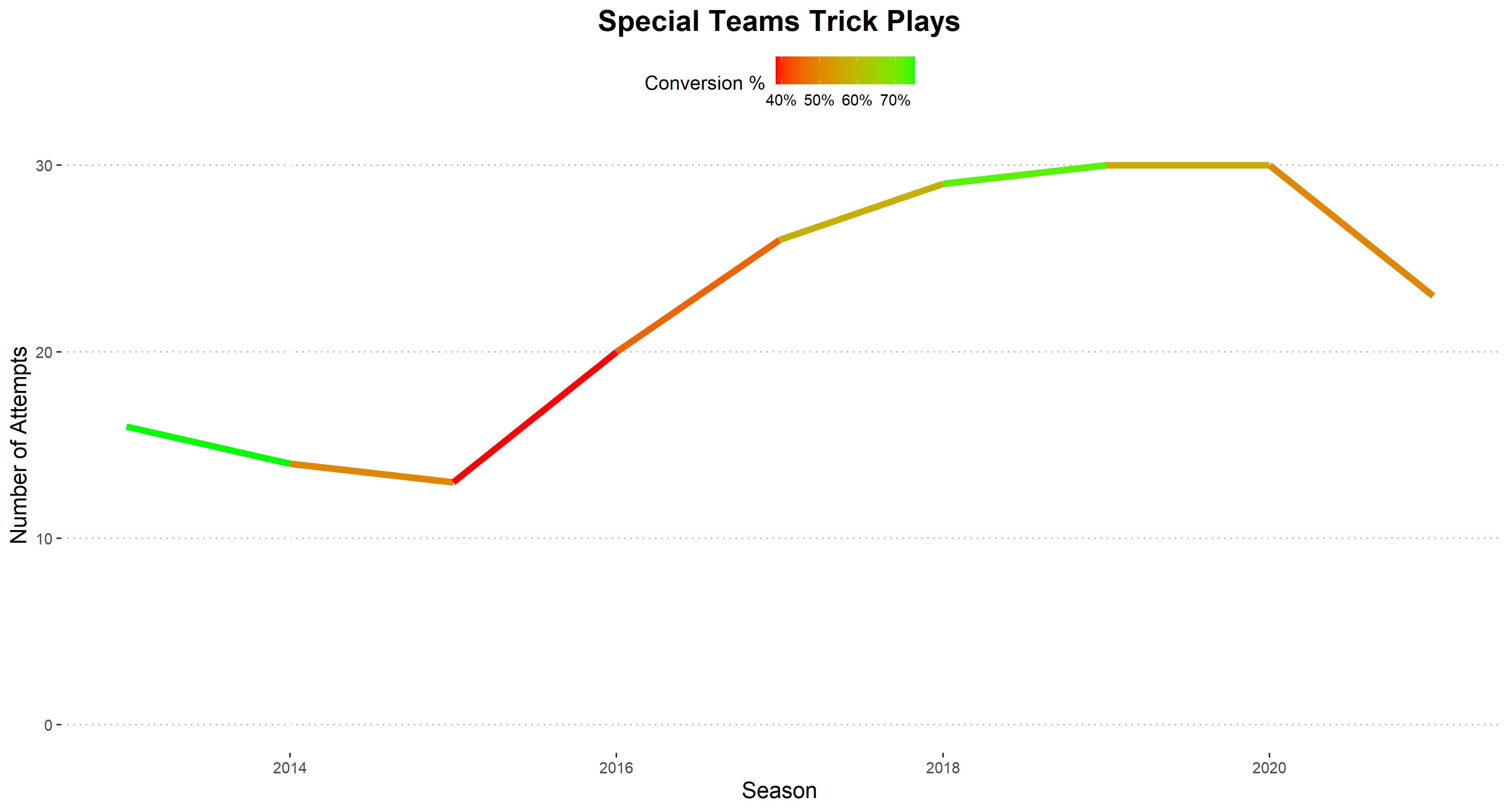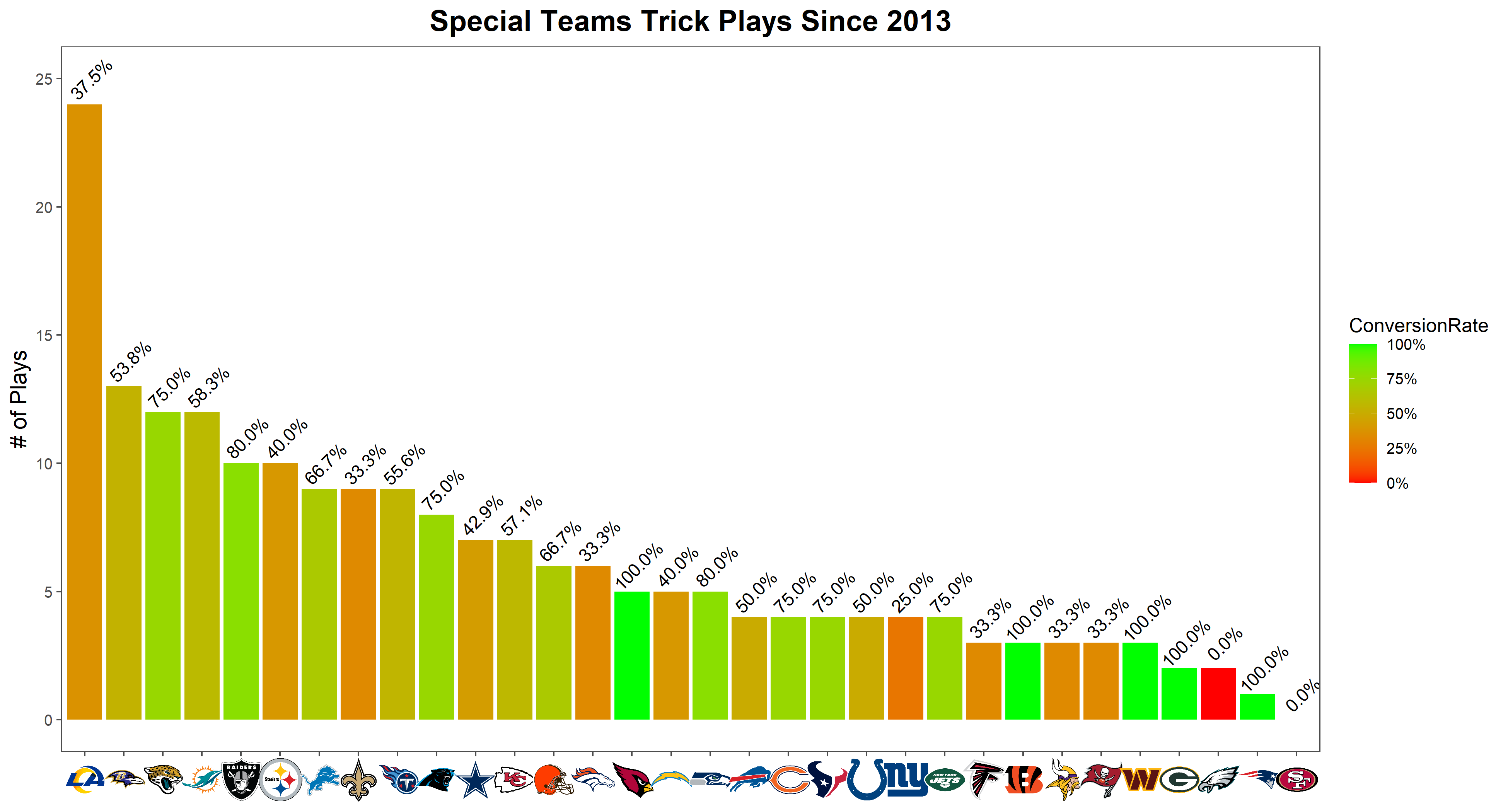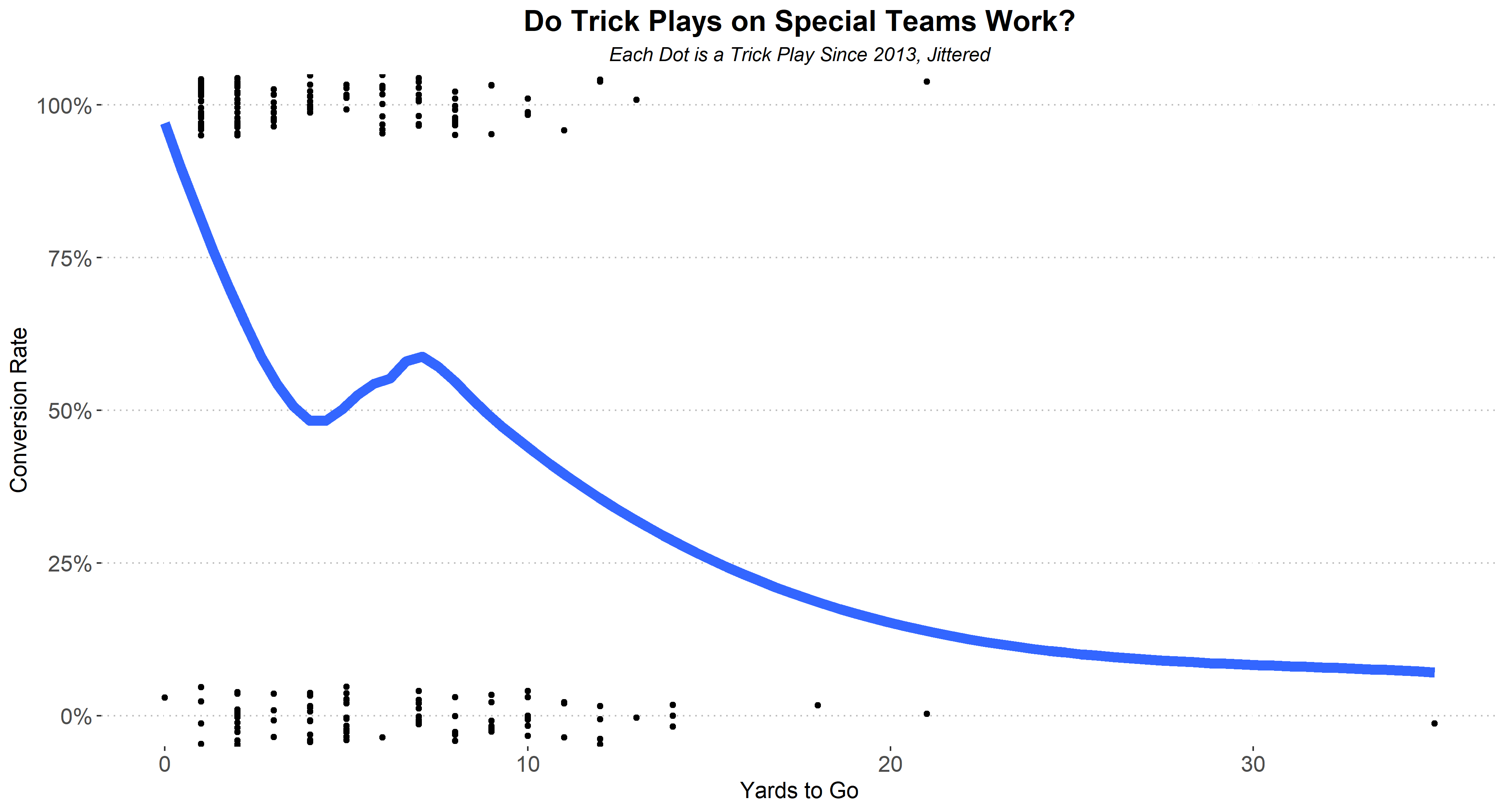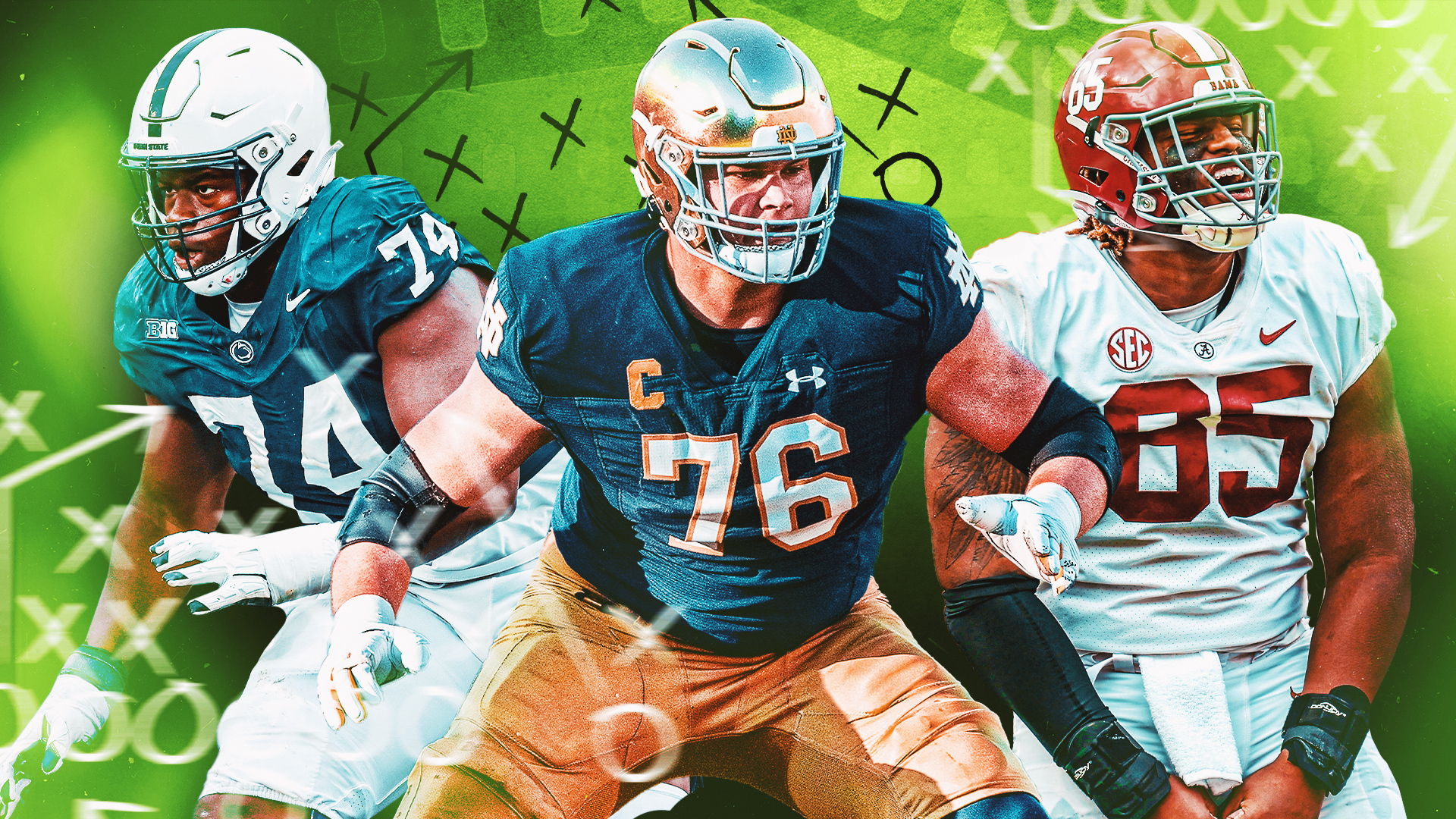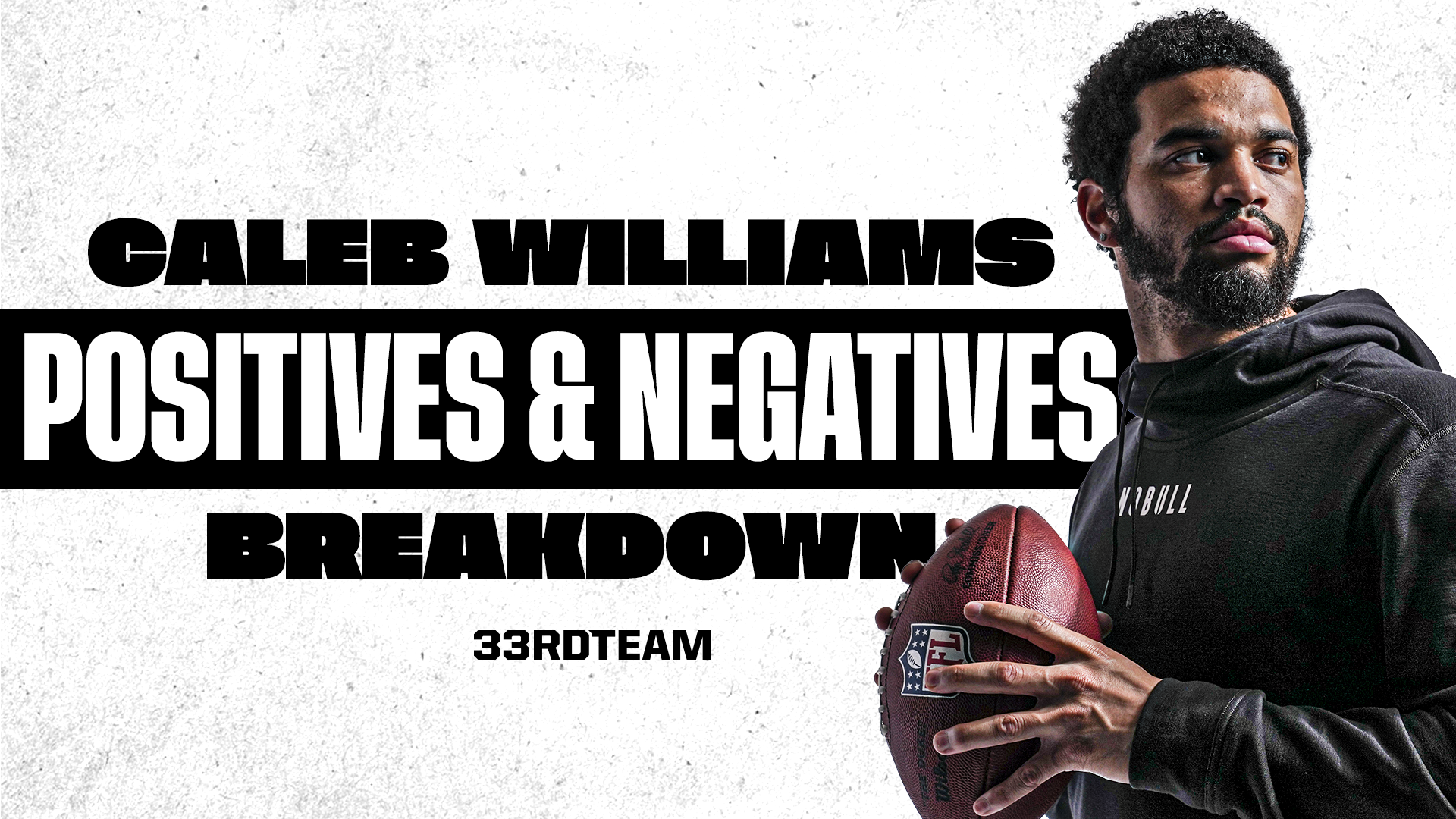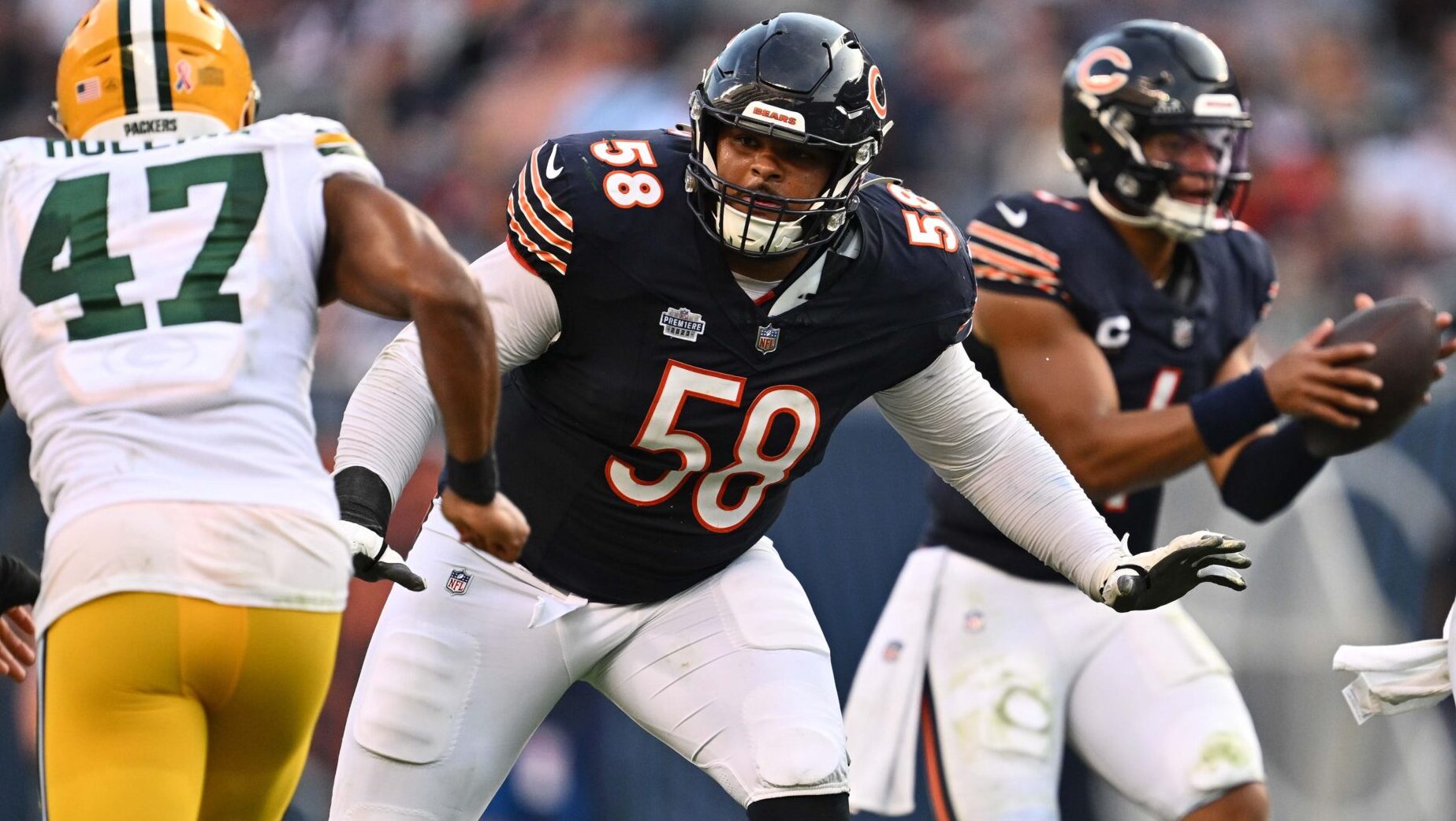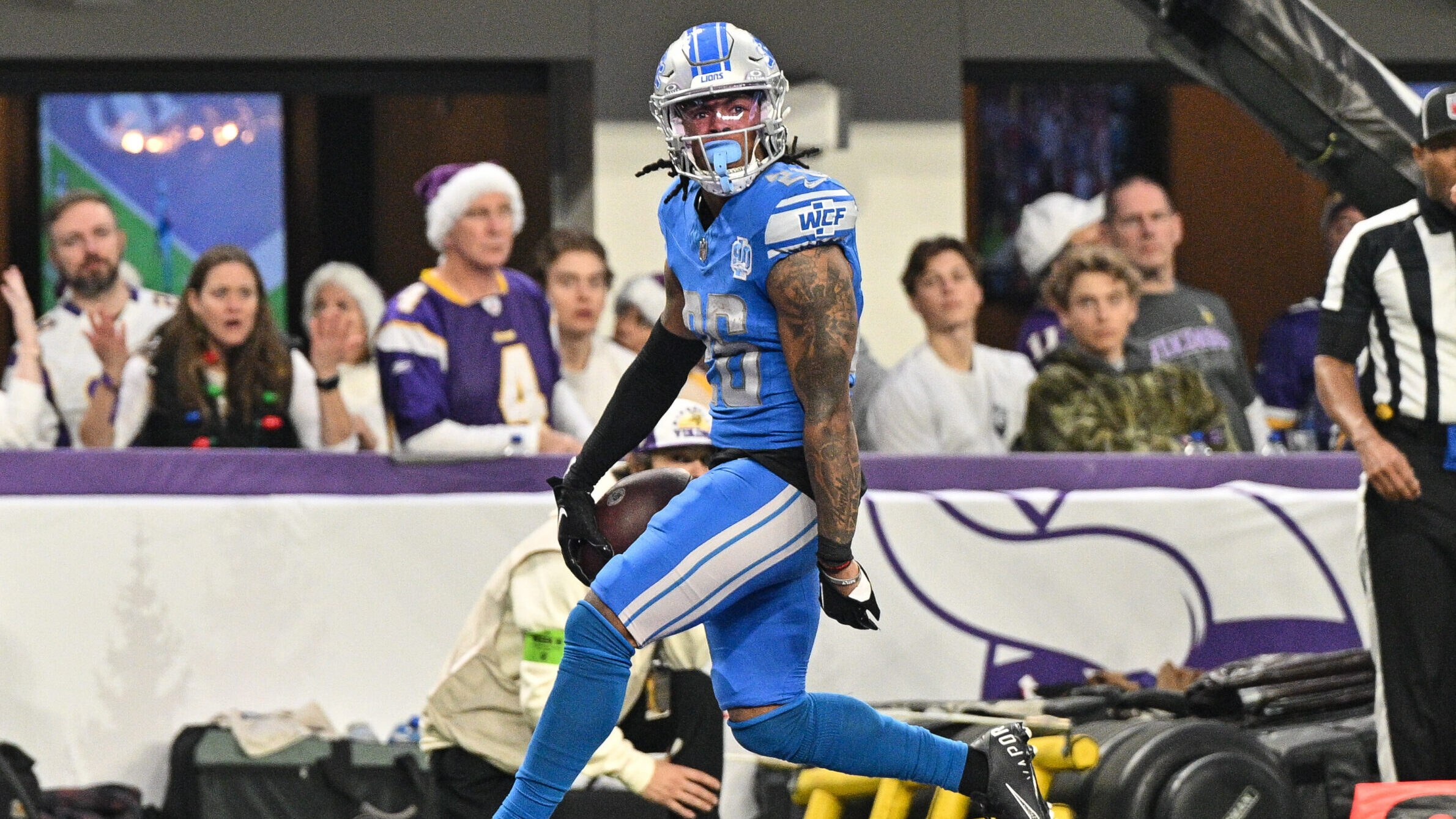Breakdowns
6/6/22
4 min read
Why Are Special Teams Trick Plays Becoming More Effective?

Plays where a team is asking their punter or kicker to do anything but boot the ball may inherently feel like something that the rise of analytics would stomp out. It does not matter whether or not Johnny Hekker’s career passing efficiency is roughly in line with late-career Joe Flacco — the combination of teams going for it on fourth down more often and a longer extra point distance sounds like the death knell for one of the most fun plays in the game.
What this graph above shows, however, is that not only have trick plays on special teams increased, they have also become more successful on average. While we would expect the 2015 extra point push back to lead to a decline in attempts, starting in 2016 there has been a significant jump in trick plays – more than doubling from 13 attempts in 2015 to 30 in 2019 and 2020.
Although there was a slight drop in 2021, we are still seeing an average of nearly a trick play per team per season. Of course, it’s not actually one per team, with some teams significantly more likely. Here’s how often each team has attempted these plays:
Perhaps unsurprisingly, it’s Hekker’s Rams that are far-and-away the most aggressive team in the league, followed by the analytically minded Ravens and adventurous Jaguars, Dolphins, and Raiders.
On the other side of the board, four of the league’s tentpole franchises in Green Bay, Philadelphia, New England, and San Francisco have combined for only five of such attempts in nearly a decade.
Interestingly enough, the Rams weren’t even all together that successful, converting only 37.5% of their attempts into first downs. With only a few teams below that average, it seems like they’re likely using too many trick plays on special teams – they’ve passed the point of catching the defense by surprise.
As seen above, this chart indicates that the sweet spot for a special teams trick play is right around 4th-and-8, even converting over 50% — better than the best offenses from that distance on third down.
Why is a trick play more successful? The most important element of a successful trick play is catching the defense “going through the motions.”
On special teams, a team is unlikely to have a talent advantage over the defense (in terms of ability to pass/run the ball), specifically because the QB and star attackers are off the field. As a result, teams need to take advantage of a unit that is failing to process the play and simply responding to what they think will happen. This is a momentary advantage.
As soon as the snap goes in an unexpected direction or the kicker/punter fails to kick the ball, NFL-caliber defenses will recognize the play and begin to adjust. Without that potential talent advantage, teams must use any positional or technical gain they’ve picked up in that moment to beat the defense.
This could be a lineman allowing his defender to gain inside penetration, creating an outside lane for the ball carrier. Or perhaps a punter who watches the defense turn and run, tucking the ball himself to run for the first. These tactics aren’t perfect, but they show an ability to buy 7-10 yards before the defense’s talent advantage compensates and shuts the play down.
Below, we’ve included an animated version of the per-team chart. Special teams trick plays are one of the most fun plays in football, and their charts should be too. If recent history is any indication, these kinds of plays thankfully won’t be going anywhere anytime soon.
